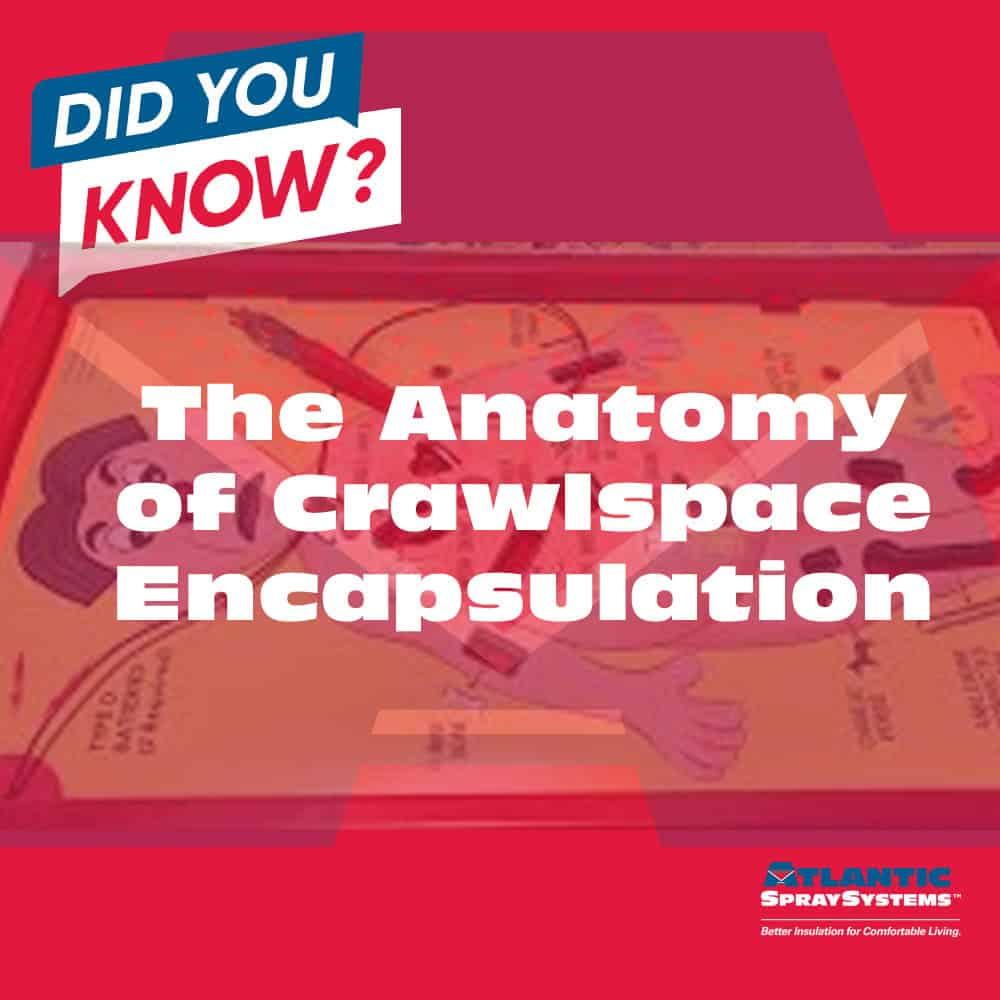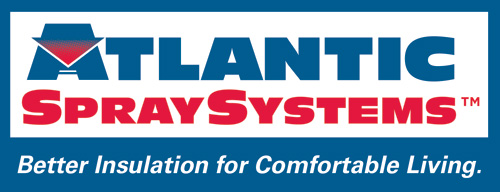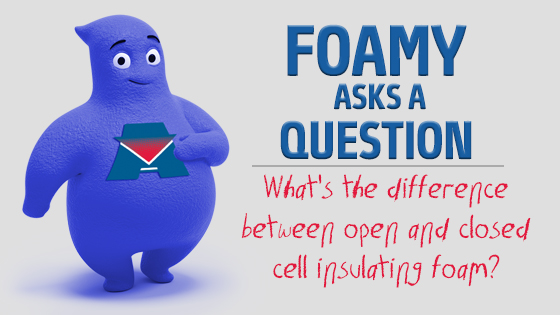DID YOU KNOW: The Anatomy of an Encapsulated Crawlspace
Top 8 Reasons to Replace Your Old Attic Insulation: Up your Square Footage (More Space)
July 18, 2024Top 8 Reasons to Replace Your Old Attic Insulation: Save the Planet!
September 30, 2024When you take a look at your home, there are a number of parallels to people. We talk about whether your home is ‘healthy’, or whether it has ‘good bones’. When it comes to your crawlspace, it’s part of that ‘anatomy’. Here we’ll discuss encapsulated crawlspaces and how they protect that ‘body part’ of your home from moisture.

Crawlspace Encapsulation: The Basics, with a Dash of Humor
Ah, the crawlspace. That dark, mysterious, slightly creepy area under your house where forgotten toys, old pipes, and the occasional family of spiders live. It’s often neglected, but giving it some attention through encapsulation can work wonders for your home’s health. So, let’s dive into the basic elements of crawlspace encapsulation and why each is used, with a little humor to keep things lively.
Vapor Barrier: The House’s Raincoat
First up, the vapor barrier. Imagine your house is a person, and the crawlspace is its feet. You wouldn’t let your feet walk around in wet socks all day, right? The vapor barrier acts like a raincoat for your crawlspace, keeping moisture out. Typically made of thick plastic sheeting, it covers the ground and sometimes the walls, preventing moisture from seeping into your home’s foundation. This helps avoid mold, mildew, and the dreaded musty smell that could rival your great-uncle’s old gym socks.
Insulation: The Cozy Blanket
Next, we have insulation. Think of this as a cozy blanket for your crawlspace. Insulating the walls and sometimes the floor of the crawlspace helps keep your home’s temperature stable. This means warmer floors in the winter and cooler ones in the summer. Plus, it can lower your energy bills, giving you more money to spend on things you love, like fancy coffee or that subscription box of treats for your cat you’ve been eyeing.
Dehumidifier: The Humidity Police
Then there’s the dehumidifier, the unsung hero of crawlspace encapsulation. If the vapor barrier is the raincoat, the dehumidifier is the humidity police, ensuring your crawlspace doesn’t turn into a tropical rainforest. It pulls excess moisture out of the air, keeping humidity levels in check and preventing mold and mildew from setting up camp. This gadget is like having a diligent, invisible butler working round the clock to keep things dry.
Sump Pump: The Lifeguard
Last but not least, the sump pump. Picture this: your crawlspace is a pool, but not the fun kind you can swim in. When water sneaks in (thanks to heavy rain or a plumbing leak), the sump pump is the lifeguard on duty, ready to kick that water out. It collects and pumps water away from your home, preventing flooding and the potential damage it can cause. Think of it as your home’s own superhero, minus the cape.
Why Bother?
You might be wondering why you should bother with all this. Well, encapsulating your crawlspace can improve indoor air quality (no more breathing in musty, moldy air), enhance energy efficiency (remember the cozy blanket?), and protect your home’s structural integrity (no one likes soggy feet). Plus, it can increase your home’s value, making it a solid investment for the future.
So, there you have it. Crawlspace encapsulation may not be the most glamorous home improvement project, but it’s definitely one of the smartest. Just think of it as giving your home’s underbelly the spa treatment it deserves. Your crawlspace will thank you, and so will your family (and possibly the spiders).
We would love to give you a free, no hassle consultation to let you know if your home’s ‘feet are wet’, and whether a crawlspace encapsulation could really benefit you. Fill out this form, or Call us to set up your visit today!



